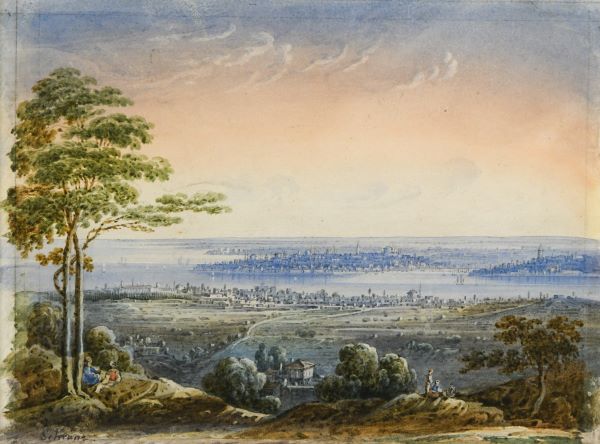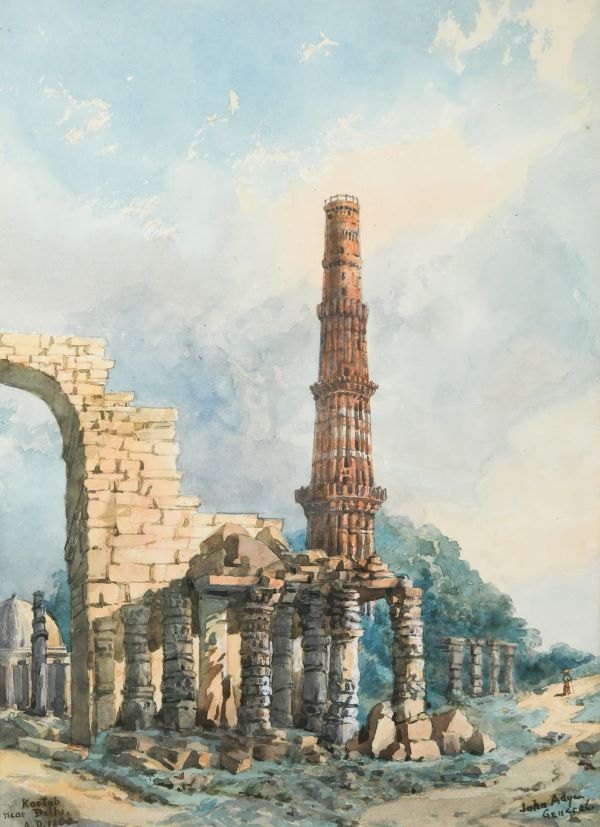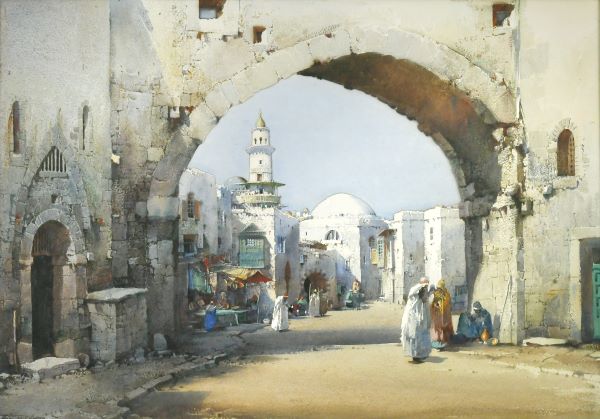“Topographical Pictures?” my dinner companion repeats back to me somewhat unsure having asked about my specialisation, “do you mean maps?” This tends to be the standard response and as such, maybe this rather niche category should be re-branded to make it a little easier to understand.
On starting my career (rather longer ago than I sometimes care to admit) at another of the well-known auction houses, one of the areas that really fascinated me was the Topographical Picture department. Topographical pictures are simply views of landscapes – topography, but often focus on unusual and exotic imagery of distant lands.
The attraction for me in this category lay not only in these wonderfully exotic and often romanticised views of far-flung corners of the globe, but also the extraordinary stories of the artists and explorers who created them. During the golden age of Travel and Exploration in the 18th and 19th centuries, almost the only means of recording the landscapes, peoples and their way of life being discovered by European travellers, was through the use of pencil and watercolour. Back at home there was a voracious appetite for information and knowledge during the Age of Enlightenment and these drawings and watercolours would often be reworked into engravings and lithographs and published in the many and popular accounts of voyages of discovery.

A panoramic view of Constantinople by Joseph Schranz (1803-1866)
Topographical art can suit all tastes and budgets. Smaller works by lesser-known artists tend to sell for around £150 to £300 apiece, whilst fully worked up oil paintings by the greats of the genre, such as Thomas and William Daniell or George Chinnery (all three of which worked in India and China), regularly achieve well into the tens of thousands and more.
For those looking to enter the world of collecting in this area, a good starting point might be with the many engravings produced in the 18th and 19th centuries, some very large and impressive, in scale of the exotic destinations the artists travelled to. Drawings and watercolours are also a good beginning point and were often produced by soldiers and sailors onboard ships as a way of simply passing the time or more covertly, as a way of recording and mapping territory for future colonisation.

The Qutab Minar, Old Delhi by General Sir John Miller Adyce (1819-1900), a British army officer serving in the sub-continent
Another thing to bear in mind with this category is its often not so much about the artist that’s important, but rather the view itself. I remember once handling a watercolour of a very charming house and garden scene in Wellington, New Zealand, dated 1841 and executed by a 12 year old child newly off the boat; not a great picture technically but incredibly rare and important as an early record of the settlement. As always, condition can be an issue and for the beginner, its best to steer clear of large restoration jobs which can result in costly additions to your original purchase. Most of all, collecting in this area (as with all collecting) should be fun, with the views you buy being of interest to you and capturing your imagination.
Topographical pictures, whether high in value or more affordable, can be found through specialist dealers or regularly at auction houses and Cheffins is no exception. Looking ahead to our Fine Sale on the 26th June, we will be offering a good selection which include a fine view of the silver mining town of Mineral de Pozos, Guanajuato in Mexico, (Lot 208 - £8,000-12,000). Originally a small Jesuit controlled concern in the 18th century, the town rose to prominence in the mid to late 19th century with a recorded population in the early 1900s of around 70,000. By the mid-20th century, it became something of a ghost town, but much is now being done to restore its historic buildings. There are also views of Istanbul (Lot 190 - £7,000-10,000) - A panoramic view of Constantinople by Joseph Schranz (1803-1866), as well as a later view (Lot 189 - £5,000-8,000) by the British artist Edward Seago (1910-1974) entitled Dusk on the Golden Horn.

A view of the silver mining town of Mineral de Pozos, Guanajuato in Mexico
Other works of note are two watercolour sketches by one of most famous 19th century travelling artists, Edward Lear (1812-1888), (Lot 180 - £1,500-2,500) View on Mount Lebanon, dated 18th May 1858 and (Lot 181 - £1,000-1,500), A view of Finale, Italy, dated 17th December 1864. For items at a possibly more affordable price point, we have a charming view of The Qutab Minar, Old Delhi (Lot 183 - £100-200), by General Sir John Miller Adyce (1819-1900), a British army officer serving in the sub-continent; A view of Pompey’s Pillar, Alexandria, attributed to Luigi Mayer (Lot 184 - £400-600) and A North African street scene (Pictured below - Lot 182 - £800-1,200) by Noel Harry Leaver (1889-1951).
